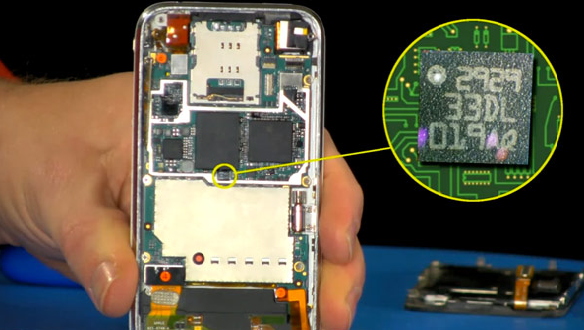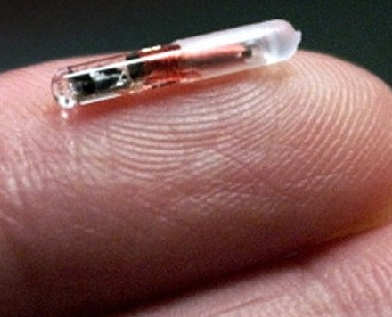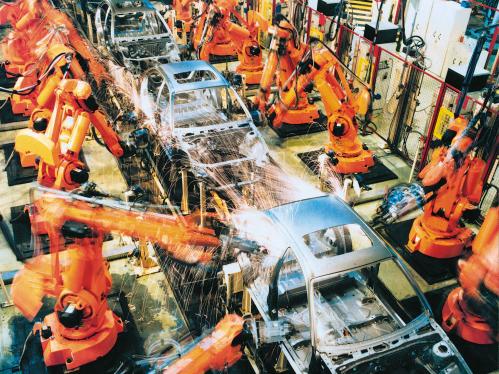Technology affects your life in everything that you do—it saves time, passes time, opens gates to new experiences, and makes getting where you need to go quicker than ever. Without thinking twice about it, you use your phone to look up directions, speed up the process of sitting in the waiting room by playing Words With Friends, and talk with relatives halfway across the country as if they're sitting right in front of you. But how about the technologies you're using daily that you're probably unaware of? Read on below to find out just how big of a difference these quiet technologies make in your life.
Accelerometers
If you're from the 21st century, it's safe to say you sent a text today. It was simple and quick and most likely you thought nothing about the technology involved. Beneath those words on your touchscreen lies an accelerometer, the silent little technology responsible for turning your screen to a horizontal position as you flip your phone so your fingers have more space on the virtual keyboard.
An accelerometer measures the speed and motion of an object, giving it the capability to distinguish which angle it's being held at. The sensors in the accelerometer tell the tiny computer in your phone to make the visual output appear wide instead of long, all so you can text and view comfortably on your high-tech smartphone.

A mobile phone's accelerometer knows if the phone is upwards or sideways. Image via engadget.com.
RFID
If you commute a long way or cross over a major bridge to get to work, other than being stuck in bumper-to-bumper traffic, you may even have to pay a toll as part of that frustrating drive. But with an automatic tolling chip such as an E-ZPass, you can fly straight through that toll booth without stopping to dig around for loose change.
Thanks to radio-frequency identification (RFID), your toll pass is fastened to your car or license plate by using a small computer chip that's able to communicate, send, and hold information. By using radio frequency, an electronic reader that can see your pass or license plate collects the information in your chip including your vehicle's registration and address to automatically pay your toll fees.
RFID is a growing technology, and chips can also be found in tags on products from grocery and retail stores, passports, animals, ID badges, and mobile phones.

RFID chips can send and store information. Image via intellihub.com.
Lasers
You're probably aware of the fact that after the cashier at the grocery store grabs your items off the conveyor belt, they're using a laser scanner to add the price of those objects to the computer to total your purchase. But did you know that when you wind down on the couch to watch a movie, a laser is responsible for making your DVD play? DVDs are lined with microscopic bumps that send information to a transmitter which turns it into audio and visual form. The bumps are read by a laser that moves at a steady rate so that you can catch up on all the episodes of your new favorite show.

DVDs are lined with microscopic bumps that are read by a laser. Image via npr.org.
Robots
We've been hearing about how robots will someday rule the world for some time now. The truth is, robots are already being used to handle a number of tasks that are part of our everyday lives. Most people don't recognize this fact because they expect to see humanoid robots with arms, hands, and a face, but robots just need mechanized parts that respond like human parts. Though they don't have an actual brain (not yet anyway), they have a computer or processor that gives them an idea of how to move certain parts. Robots are already impressively at work in the medical and military fields carrying out important jobs.
One of the biggest ways robots are slinking into our lives is in the manufactured products we use, especially in Japan. In 2007, a Japanese government plan called for a million robots to be installed in factory assembly lines by 2025. It's not impossible, because in 2005, about 400,000 Japanese robots were already hard at work. As far back as the 1960s, robots have been used in the automobile industry around the world, so if you have a car, the next time you see a robot, it wouldn't hurt to let it know you're thankful.

Robots have been used in the automobile industry since the 1960s. Image via robotreviews.com.
What do you think about these rather silent technologies? Have anything to add? Leave a comment below!
Story via geniusstuff.com.
Advertisement
Learn more about Electronic Products MagazineMouser Electronics





